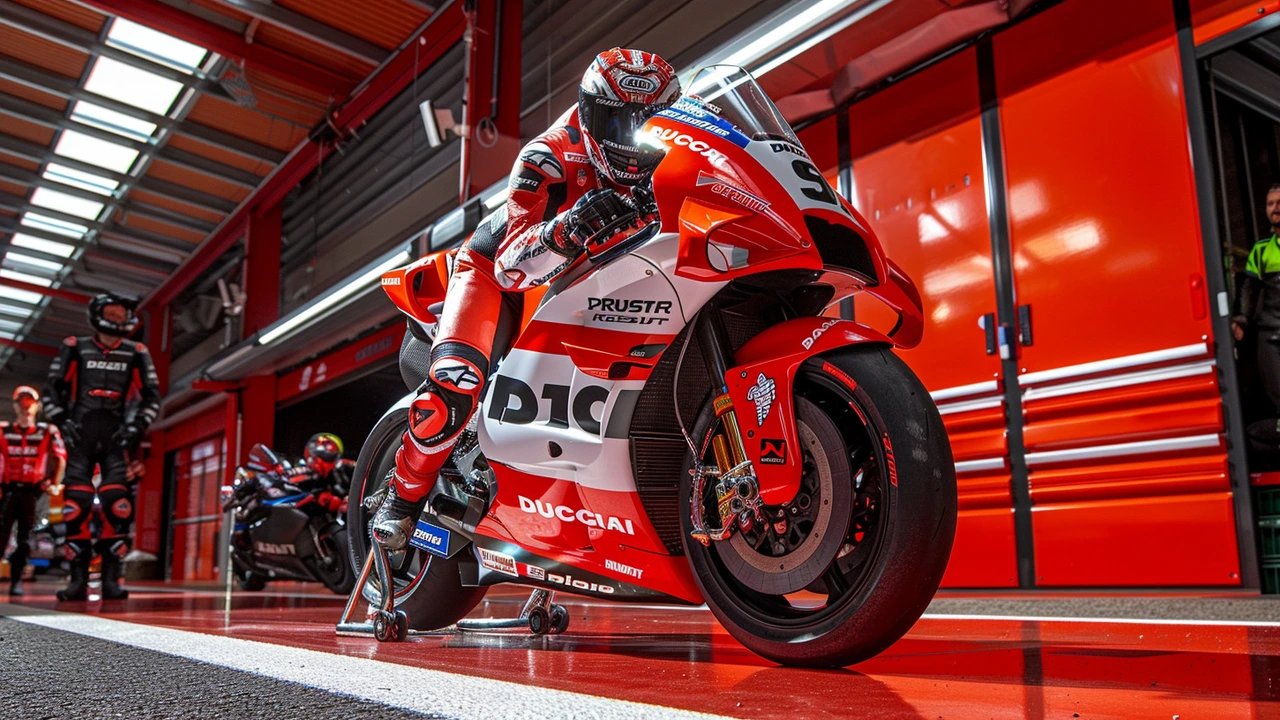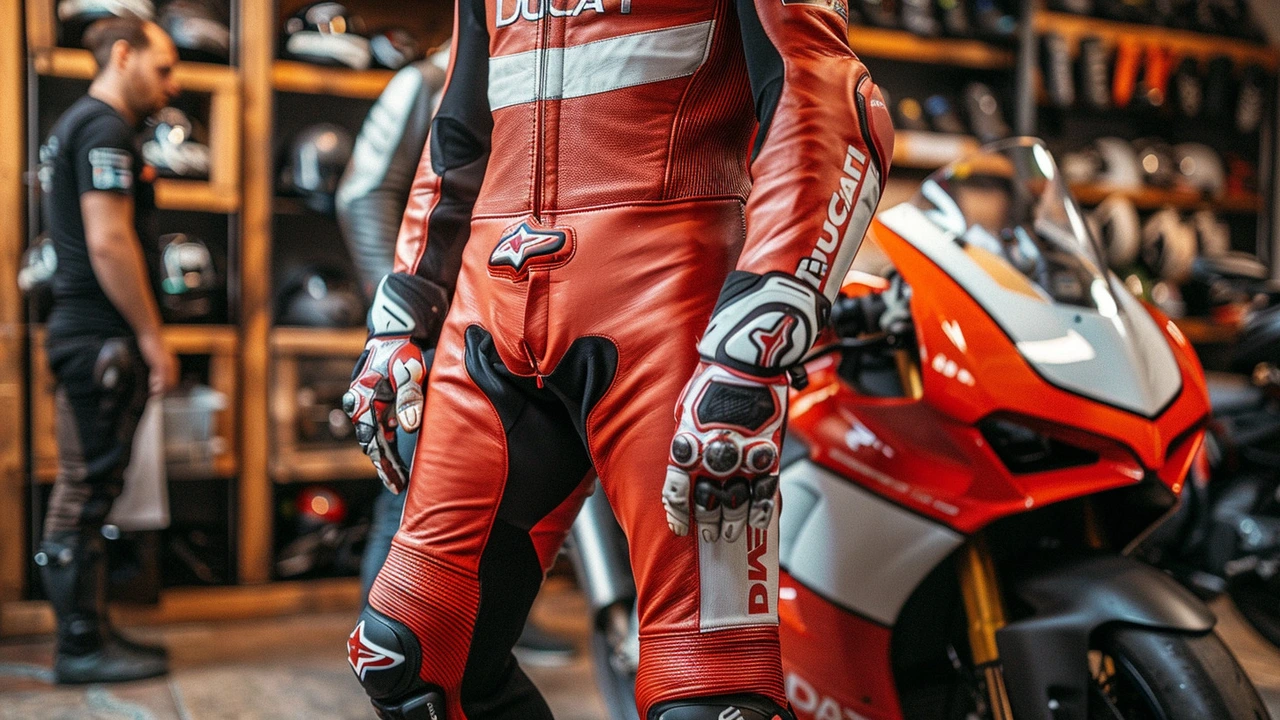Marc Marquez's Knee Slider Blunder Stirs Up MotoGP Free Practice at Assen
In the world of professional motorcycle racing, every detail counts—from the precise tuning of the engine to the smallest pieces of protective gear riders wear. The latter proved glaringly significant during the last free practice session at Assen, where MotoGP rider Marc Marquez made a memorable gaffe. Marquez, competing under the banner of the Gresini team, found himself on the practice track without his knee sliders—essential gear that prevents serious injury.
The realization came to Marquez only when he was already mid-lap, a startling and, for a professional of his experience, a highly unusual oversight. Captured on video, the incident quickly made its way onto social media where it gained rapid popularity, sparking discussions about the importance of meticulous preparation and the indispensable nature of protective equipment in motorcycle racing.
The video, shared widely across various platforms, showcased Marquez in action, carving through the track with his usual aggressive style before apparently realizing something was amiss. His immediate reaction was to check his knees, confirming the absence of the sliders, which are designed to protect his knees from the high-speed friction against the track surface during tight turns.
This kind of oversight, especially at the level Marquez competes, is rare and highlights just how critical every piece of gear is for the riders. Knee sliders, typically attached to the sides of standard racing leathers, provide a layer of protection that can make the difference between a controlled slide and a debilitating injury. For Marquez, known for his daring riding style that often sees him leaning far into corners, the absence of proper protection could have spelled disaster.
Despite the potential risks, Marquez managed to avoid any immediate harm before pitting for the necessary adjustments, yet the incident has sparked widespread conversation. Experts and fans alike are probing how such a mistake could happen and what it signifies, not only about individual preparedness but also about team oversight. Should there be a more stringent pre-check routine implemented? Is it solely the rider's responsibility, or should the team play a more proactive role in ensuring all gear is accounted for?

Implications for Safety and Preparedness
Observing such a high-profile rider commit a seemingly basic error offers a stark reminder of the rigors and demands of MotoGP racing. Athletes at this level endure immense physical and mental stress, balancing practice sessions, media obligations, and personal lives while maintaining peak performance. A lapse like Marquez's, while unusual, underscores the human element often overshadowed by the speed, glamour, and technology central to motorsport.
Adding to the gravity of the situation is the fact that Assen, known as 'The Cathedral' of motorcycle racing, is one of the most iconic and challenging circuits on the MotoGP calendar. The narrow, twisty track requires precision and confidence, and lap times can be severely affected by even the smallest lack of equipment or focus. In this context, the absence of Marquez's knee sliders was not just a minor inconvenience but a potential game-changer.
In motorcycle racing, preparation goes beyond the mechanical and extends deeply into the personal regime of the riders themselves. Every detail—from hydration and nutrition to mental focus—is finely tuned to ensure optimal performance. This incident serves as a reminder that even the best in the sport are not immune to moments of oversight. If anything, it humanizes these athletes and stresses the importance of comprehensive checks and rechecks, involving both the riders and their support teams.
The Role of Technology and Team Dynamics
Another angle from which this story draws interest is the increasing role of technology and how it integrates into the sport. Advanced telemetry, rider communication systems, and even wearable tech have turned modern MotoGP gear into sophisticated instruments. Yet, despite all the advancements, the fundamentals of motor racing safety gear remain unchanged in their importance.
Marquez's blunder underscores a paradox within the sport—while technology can enhance performance and safety, human error cannot be entirely eliminated. This incident may push teams to revisit their protocols and perhaps even leverage technology further to avoid such slips. Wearable tech that alerts riders and teams to missing gear could be one avenue explored in the aftermath of this incident.
Moreover, the dynamics within racing teams may also come under scrutiny. The blend of individual agency and collective responsibility is delicate. Riders often have the final say in their preparedness, but the support team is there to ensure nothing is left to chance. This incident underscores the need for a more integrated approach where regular checks and balances become second nature—both to the rider and the crew.

Learning from the Incident
While this blunder will no doubt remain a footnote in Marc Marquez's illustrious career, it offers valuable insights for the racing community. Both Marquez and his team will likely review and refine their pre-track routines, reinforcing the lessons learned from this unusual episode. For budding racers and seasoned pros alike, this serves as a real-world case study in the importance of every single piece of gear and the need for unwavering attention to detail.
The video of Marquez, devoid of his knee sliders, circulating widely, also opens up a broader dialogue within the motorsport community. Discussions and debates on forums and among experts highlight a shared goal: ensuring the utmost safety while pushing the boundaries of speed and skill. In an era where the margins between victory and mishap are razor-thin, every lesson, no matter how small, contributes to the continuous evolution of the sport.
As discussions continue, Marquez’s mishap will likely prompt improvements, not just within his team but also among competitors and regulatory bodies. Safety protocols might be revisited, and training regimes adjusted to introduce more rigorous pre-race checks. The incident is a timely reminder that in the high-stakes world of MotoGP, even the most seasoned athletes are susceptible to lapses, and it's how they learn and adapt that defines their journey.
In summary, while the image of Marc Marquez without his knee sliders might spark amusement and surprise, it also serves as a critical teaching moment for the entire motorsport community. Through meticulous attention to detail and embracing both human and technological resources, the sport can continue to evolve, ensuring that riders are as safe as they are fast.




Wow, a rider forgetting his knee sliders-hardly the headline you’d expect from a seasoned champion, yet the footage shows it plainly: mid‑lap, a sudden glance down, the realization dawning like a bad joke; the team’s pit crew must have been scrambling, and fans instantly flooded feeds with memes, GIFs, and a chorus of “how???” comments; clearly, even the best can slip up when routine becomes second nature, but the ripple effect? It’s massive-safety protocols get re‑examined, sponsors get nervous, and the whole paddock buzzes over a simple, preventable miss.
It’s sad how a tiny piece of gear can expose the fragility beneath the roar of engines, a reminder that even idols are merely humans.
The absence of a single protective element on a machine that dances with danger invites a contemplation of the thin line between mastery and mortality. In every turn a rider negotiates his own existential margin, and when that margin narrows to a missing slider the universe whispers its indifference. The lesson is not merely about equipment but about the humility required to honor the relentless edge of sport.
Marc Marquez’s slip-up is a textbook case of how even the most elite athletes can stumble on the basics. First, the knee sliders are not a luxury; they are a core safety component mandated by every serious racing team. Second, the pre‑ride checklist is designed to catch exactly this kind of omission before the rider even hits the asphalt. Third, the team’s pit crew bears ultimate responsibility for confirming that every piece of gear is in place. Fourth, the rider’s own routine should include a visual confirmation of the sliders, as part of the mental warm‑up. Fifth, technology can and should augment this process, for example by embedding sensors that alert when gear is missing. Sixth, the data from telemetry can log equipment status, creating a permanent record that can be audited post‑session. Seventh, the governing bodies might consider tightening regulations to require electronic verification before a bike is cleared. Eighth, the culture within the garage must evolve from a ‘trust‑but‑verify’ mentality to a ‘double‑check‑everything’ mindset. Ninth, riders often speak about mental focus, yet physical preparation is an inseparable part of that focus. Tenth, fans and commentators love the drama of a slip, but the real drama is in preventing injuries that could end careers. Eleventh, this incident will likely spark a series of internal reviews across all MotoGP teams. Twelfth, it also provides a rare teaching moment for up‑and‑coming racers who watch the sport religiously. Thirteenth, the takeaway is simple: never assume a single component is optional when lives are at stake. Fourteenth, let’s hope the Gresini crew implements a stricter protocol and that Marquez returns to the track with his sliders firmly attached. Fifteenth, the sport will be safer for all if we all learn from this very human oversight.
Totally agree man, its crazy how something so small can cause such a big talk, we should all double check our gear before ride lol.
Every rider makes a mistake now and then, but what matters is how they bounce back and keep pushing forward-great things ahead for Marc!
One must concede that the omission of knee sliders, albeit inadvertent, illustrates a lapse in procedural rigor that could have been averted through more stringent pre‑session verification-an oversight unbecoming of a rider of Marquez’s stature.
Exactly, the team should have been on top of this ✅🚀.
Let’s use this as fuel to stay sharp on our own checks and keep riding with confidence and safety the whole season
Focus on the routine, trust the process, and always verify each piece of equipment before you hit the track; that’s how champions stay safe.
While the incident may spark global discussions, it also underscores the paramount importance of American engineering standards in safety equipment, reminding us that leadership in technology must be matched by leadership in discipline.